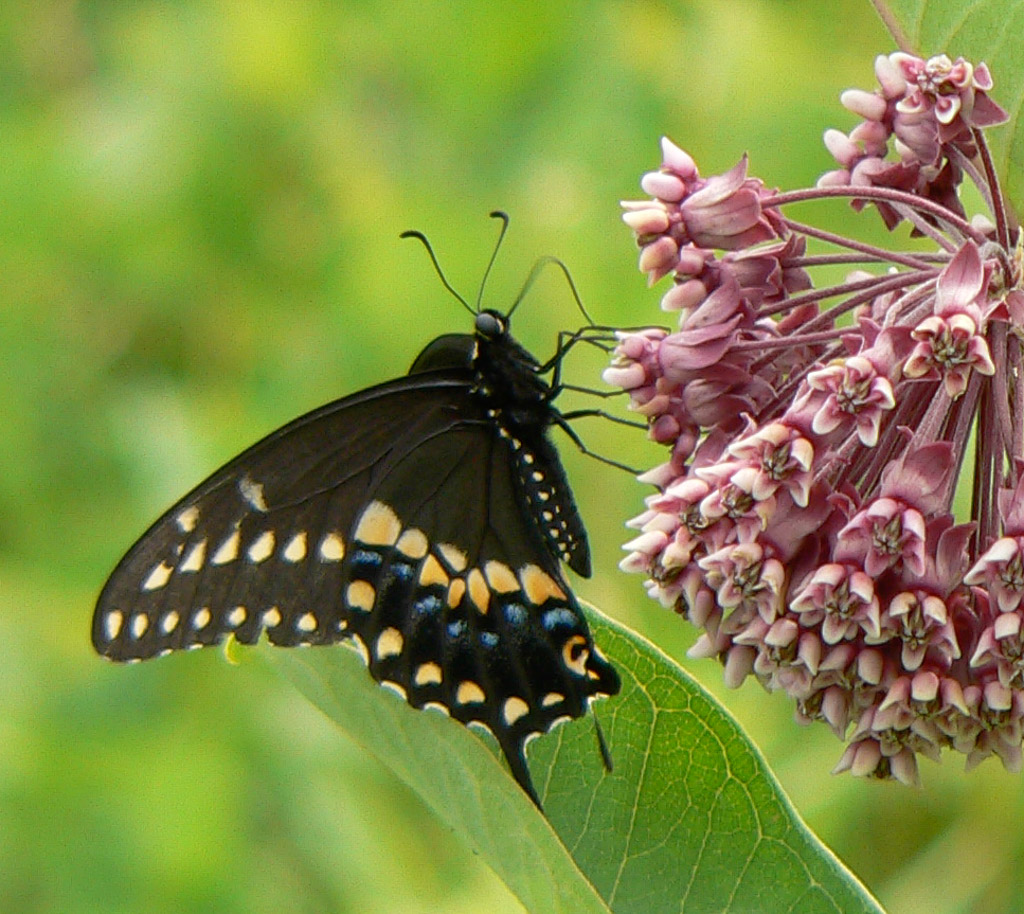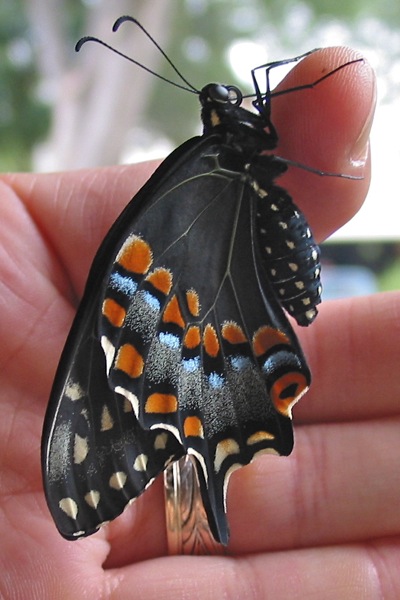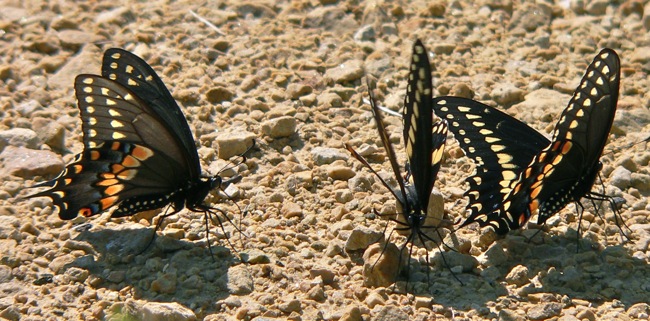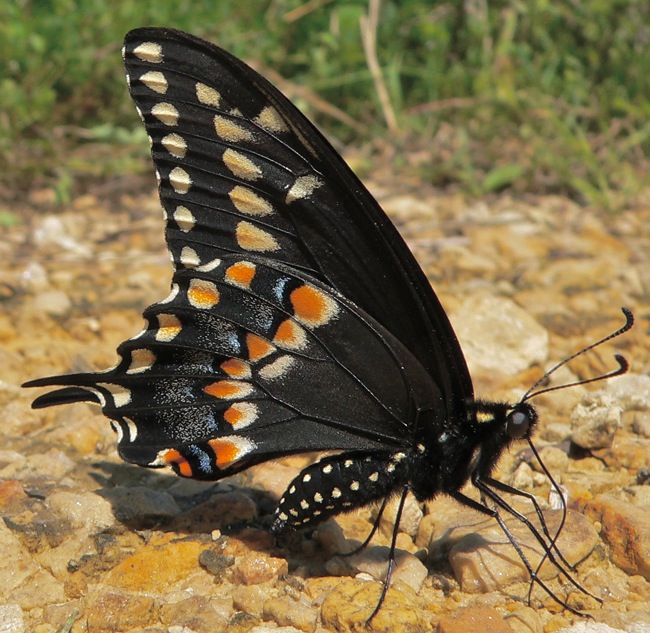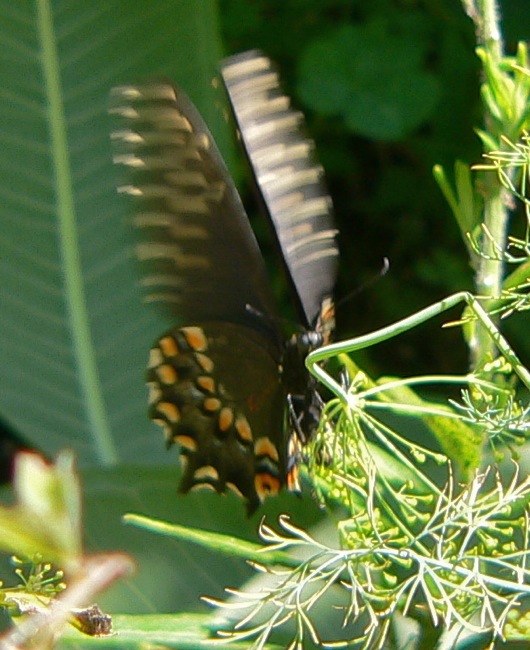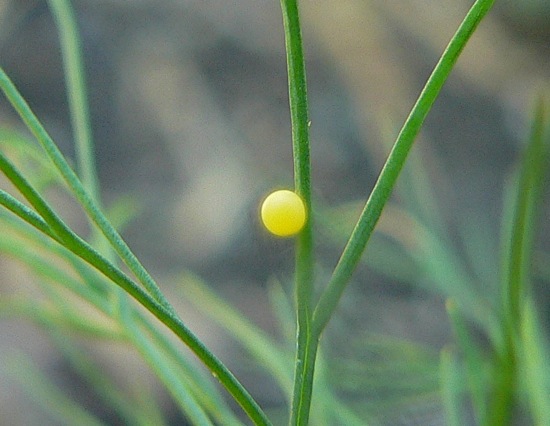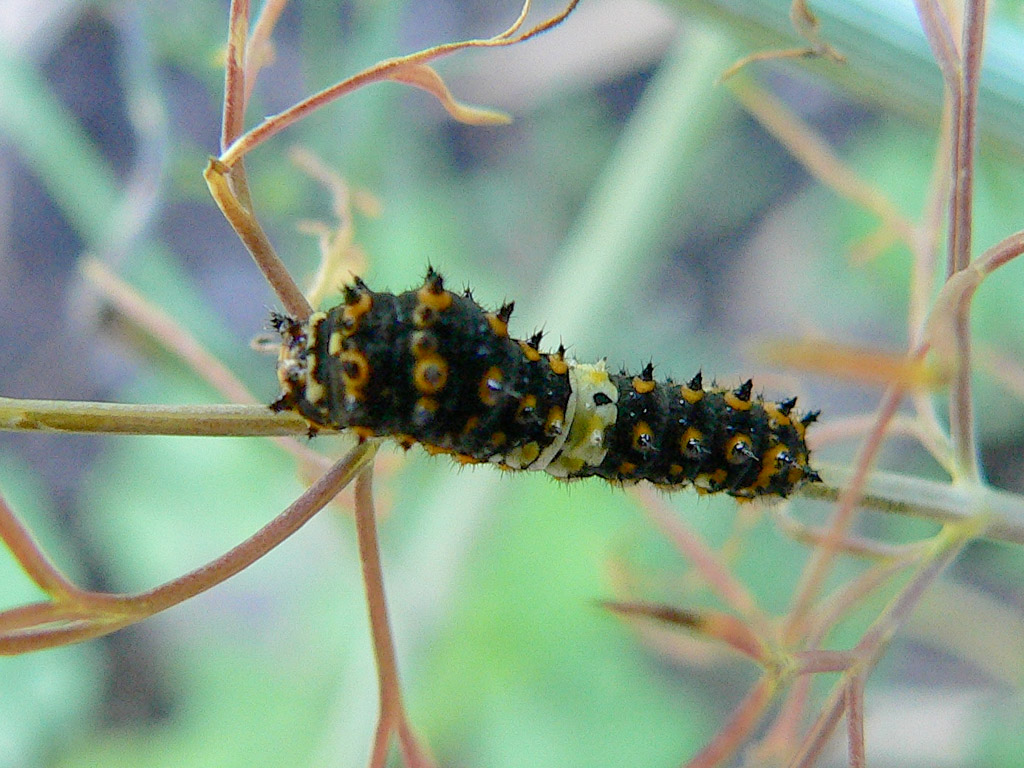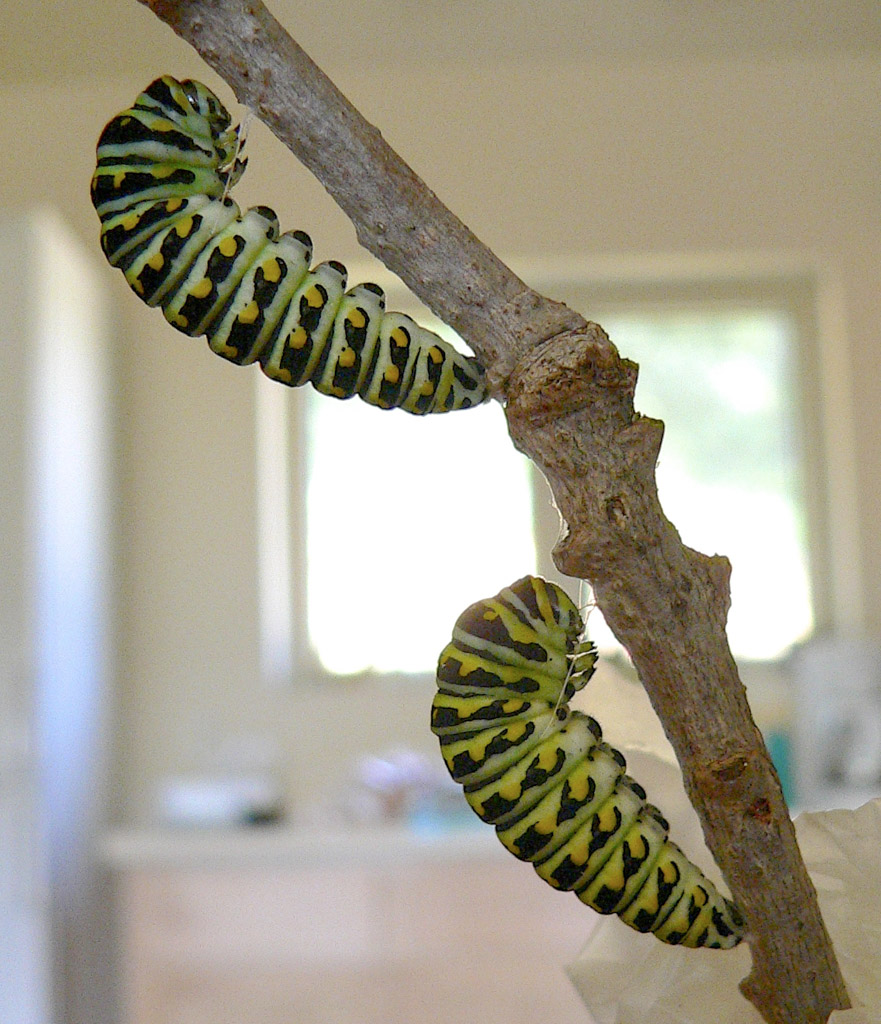Caterpillar food: plants in the Umbelliferae – the carrot family – including Queen Anne’s Lace, Parsley, Dill as well as native plants in that family.
Male Black Swallowtail – 9/2010 Males have larger yellow markings, and less blue.
Male – underside of wings
Females have less yellow and more blue, but the same basic pattern.
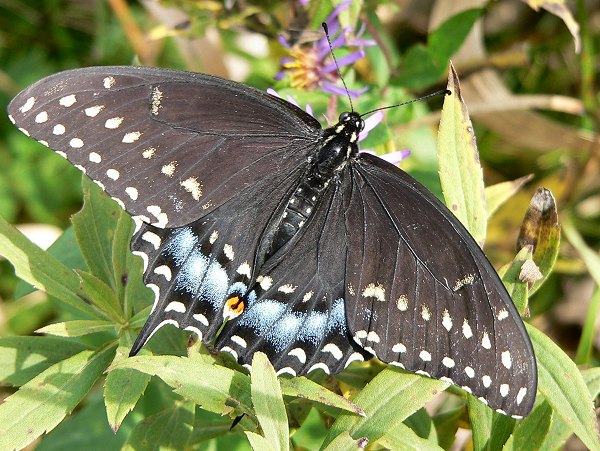
A newly hatched female – underside of wings
I often see male Black Swallowtails “puddling” on our driveway during the summer – gathering up salts to use in mating.
A puddling male
When the females lay an egg, they hover next to the host plant – laying the egg without resting on the plant.
The eggs are laid singly – this one is on a dill leaf
Early instars are dark with a white band around the middle. They look a bit like bird droppings – possibly for camouflage.
An older caterpillar – on Yellow Pimpernel (Taenidia integerrima)
Black Swallowtail caterpillar – late instar – on Wild Parsnip (Pastinaca sativa)
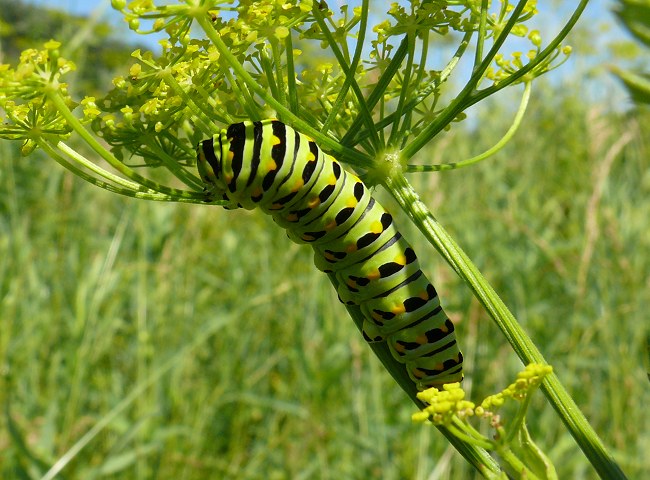
Two Black Swallowtails in their pre-pupa position
When caterpillars pupate, sometimes the chrysalis is green, sometimes brown.
5/6/2009 The adults are some of the earliest butterflies to emerge from their chrysalises in the spring.


